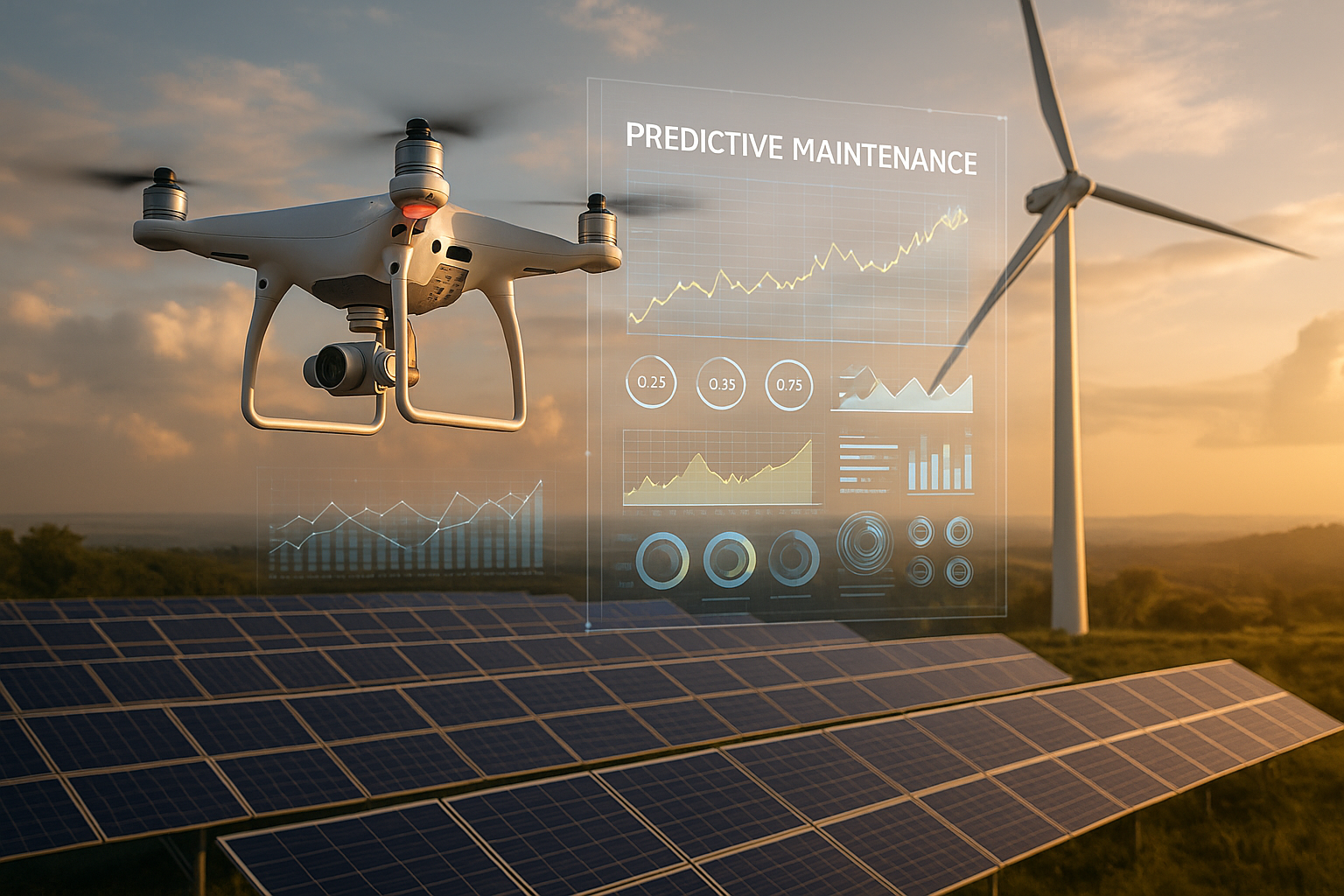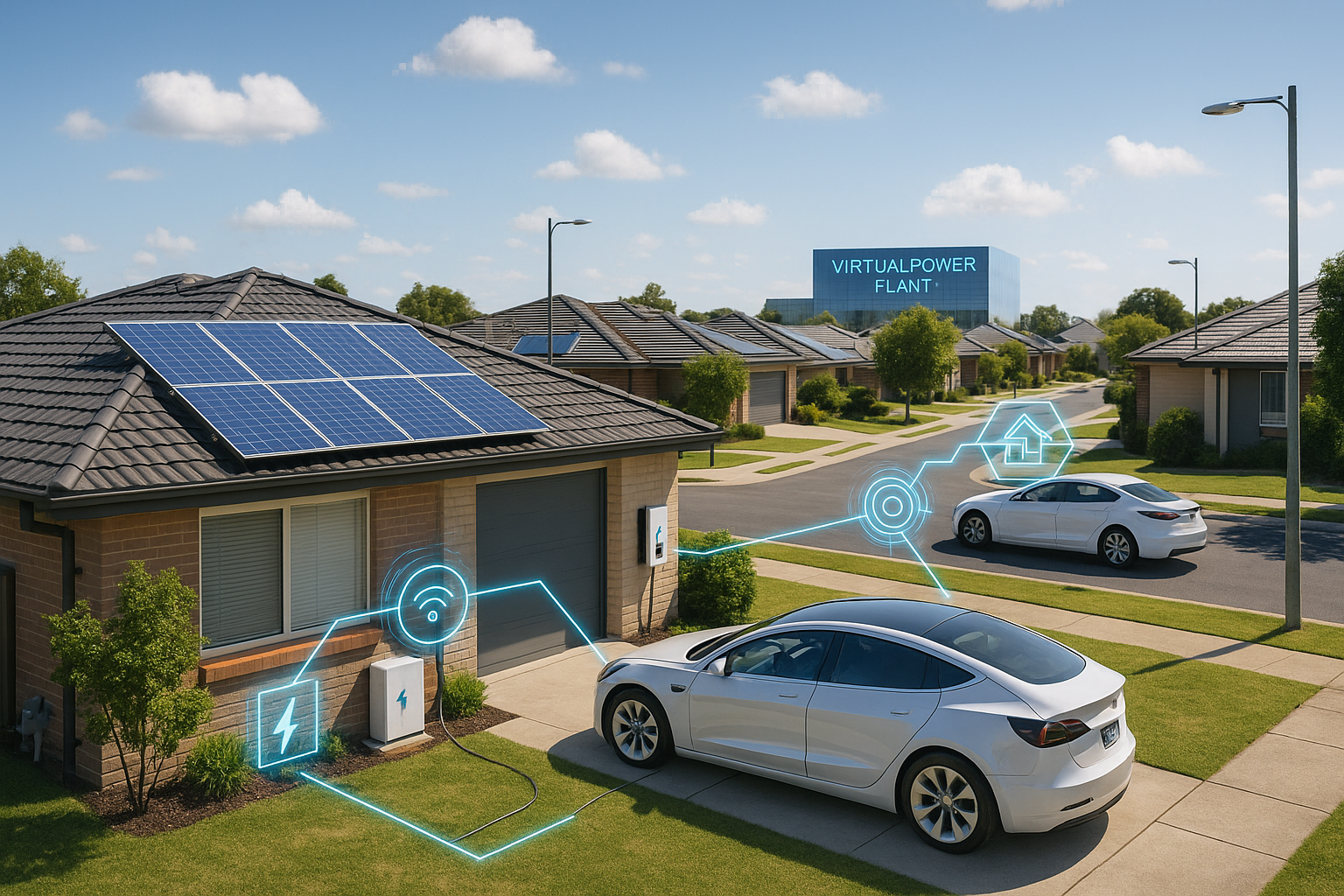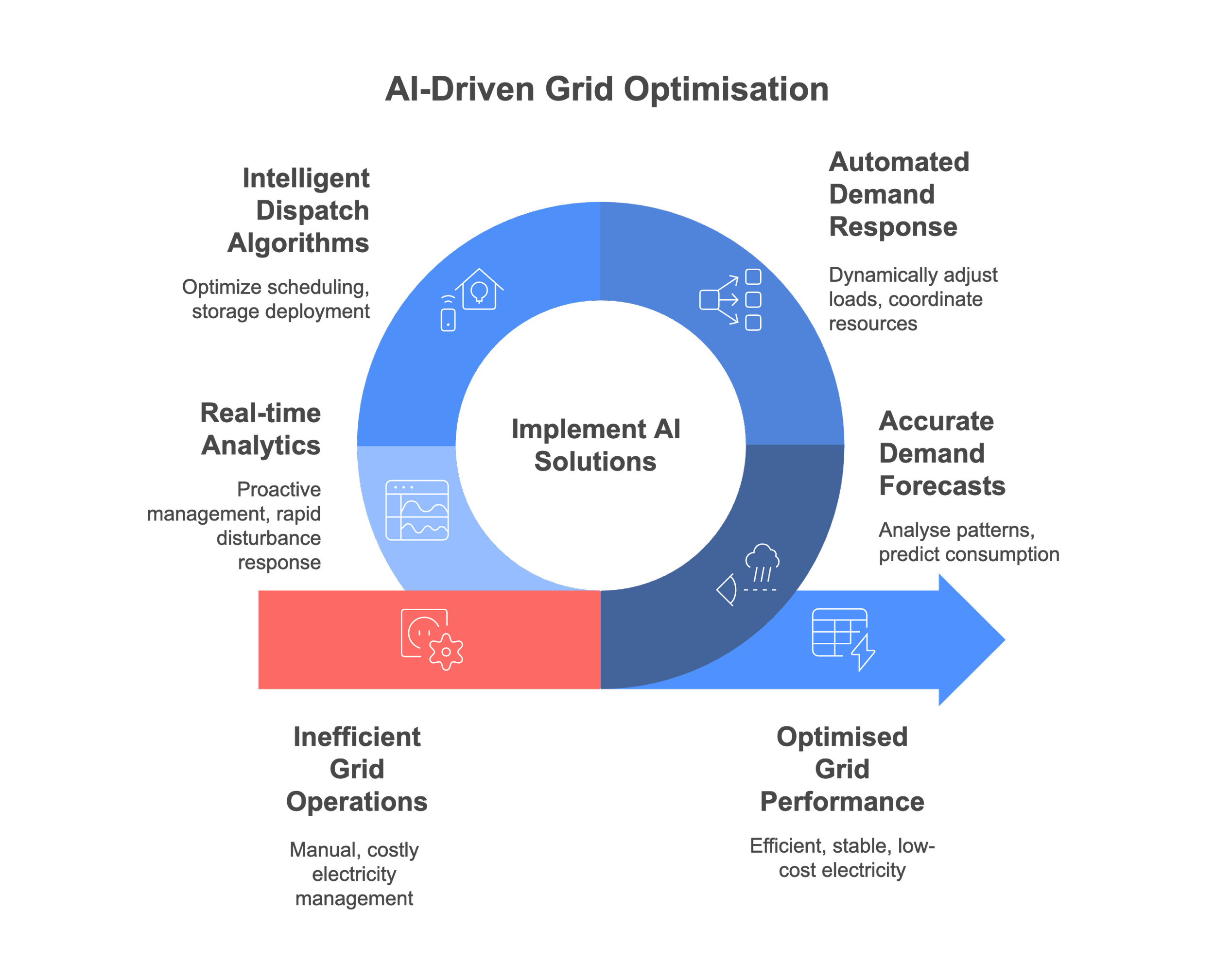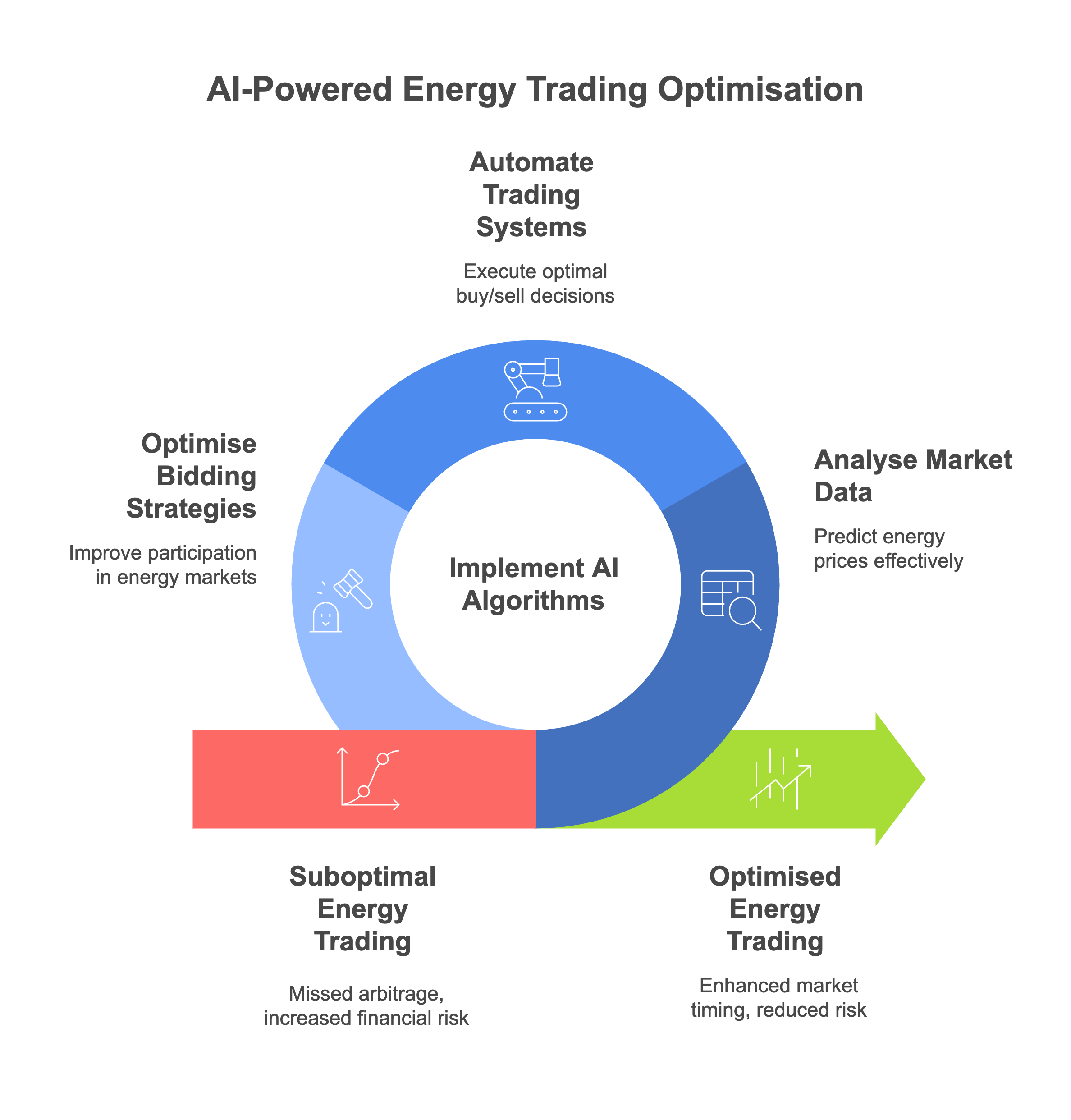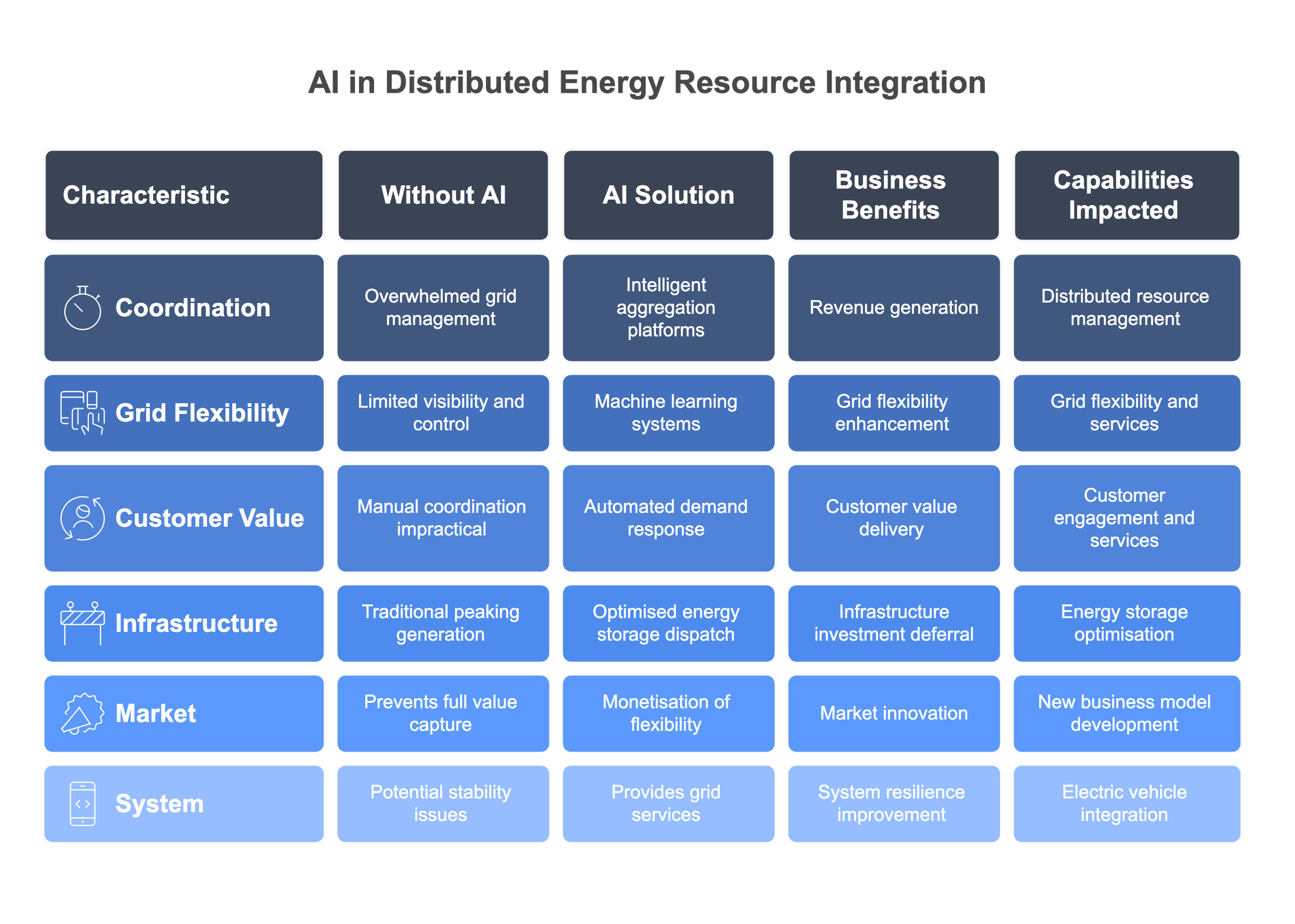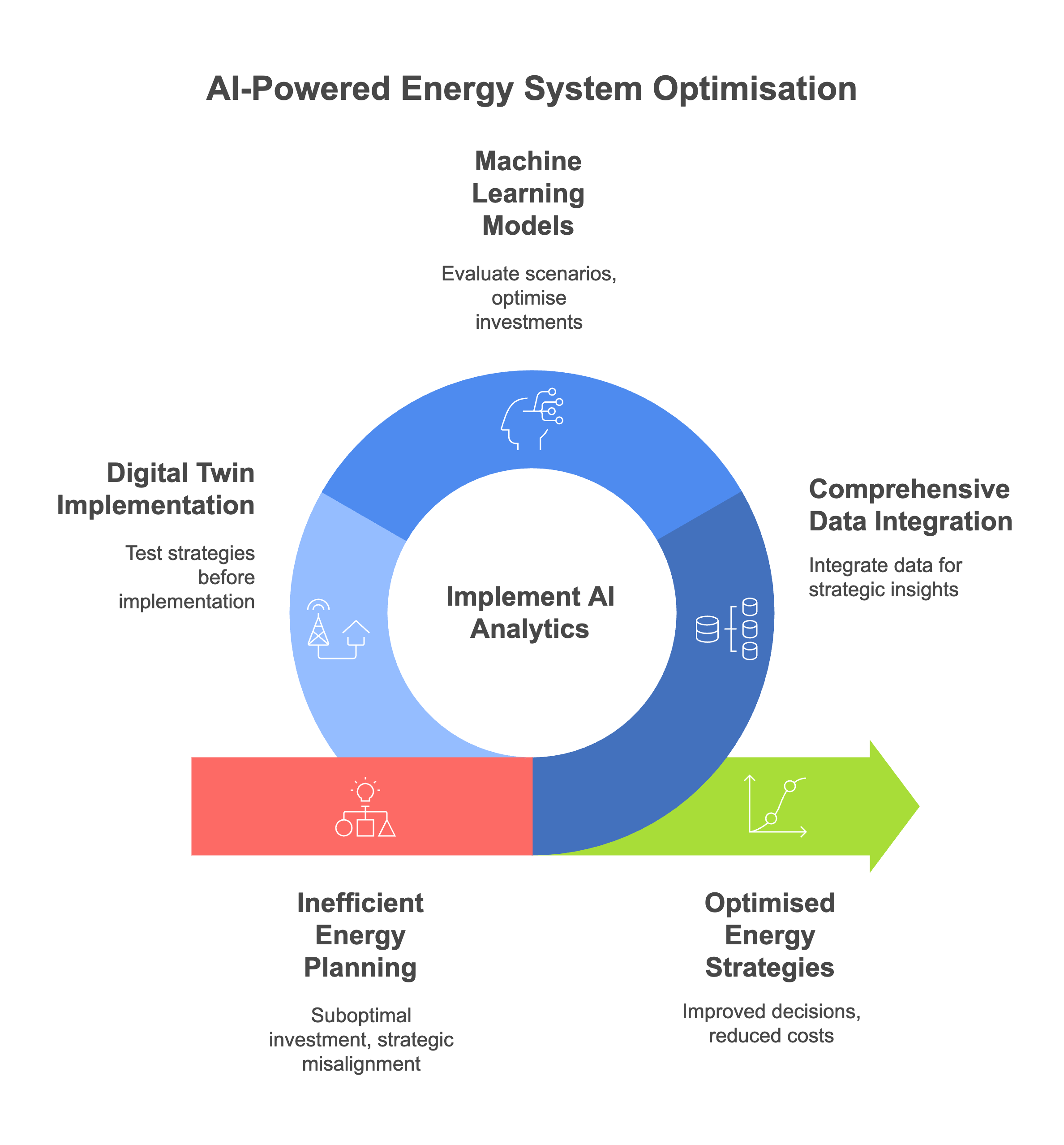
Power the Future
AI-Driven Energy Solutions for Grid Modernisation

Grid Intelligence: AI-Powered Energy Systems for Net-Zero Excellence
Australia's energy sector advances toward net-zero emissions while managing increasing renewable penetration and distributed resources. AI becomes essential for grid stability, asset optimisation, and operational excellence in complex energy systems. Leading organisations achieve 15-35% operational cost reductions and 65% reliability improvements through intelligent automation. The transformation requires sophisticated AI integration across predictive maintenance, demand management, renewable forecasting, and strategic planning to deliver reliable, sustainable energy services while maintaining competitive cost structures.
The following six strategic AI scenarios provide the roadmap where digibus.ai can help you capture these energy transformation opportunities:

The Energy Revolution Demands Intelligent Solutions. Let's Power your Transformation Together
As Australia accelerates toward net-zero emissions, energy companies need more than traditional approaches – they need AI-driven intelligence that optimises every aspect of operations. digibus.ai combines deep energy sector expertise with proven AI capabilities to help you navigate grid complexity, maximise renewable integration, and deliver reliable services while reducing costs.
We understand your challenges: managing variable renewable sources, aging infrastructure, regulatory pressures, and customer expectations for reliable, affordable energy. Our AI solutions are built for energy environments, from predictive maintenance and grid optimisation to energy trading and distributed resource management.
Your competitive advantages with digibus.ai:
Energy sector specialists with proven AI methodology
Solutions designed for grid operations and renewable integration
Track record of significant cost reductions and reliability improvements
End-to-end support for sustainable transformation
Transform your Operations and Lead Australia's Transition to a Clean Energy Economy while Maintaining Operational Excellence
Predictive Asset Management & Maintenance Optimisation
AI-powered predictive maintenance systems continuously monitoring energy infrastructure performance, forecasting equipment failures, and optimising maintenance schedules to maximise asset reliability whilst minimising operational disruptions.
CHALLENGE WITHOUT AI
Traditional reactive and scheduled maintenance approaches result in unexpected equipment failures whilst manual inspection processes are labour-intensive, inconsistent, and cannot effectively monitor infrastructure.
AI SOLUTION OPPORTUNITY
Deploy machine learning algorithms analysing real-time sensor data, historical maintenance records, and operational patterns predicting equipment failures whilst AI-powered digital twins enable predictive modelling.
IMPACTED CAPABILITIES
Asset management and maintenance planning, predictive analytics and condition monitoring, workforce scheduling and resource optimisation, safety and risk management, regulatory compliance, capital expenditure planning, customer service.
TANGIBLE BUSINESS BENEFITS
Cost reduction: Decrease in maintenance expenses through predictive scheduling and prevention of emergency repairs whilst equipment downtime reduction improves operational efficiency substantially.
Asset performance: Equipment lifespan extension through proactive maintenance interventions reducing capital expenditure requirements whilst improving return on investment significantly.
Operational excellence: Improvement in maintenance planning accuracy whilst automated inspection processes reduce safety risks and labour costs effectively.
Service reliability: Reduction in unplanned outages enhancing customer satisfaction and regulatory compliance whilst prevention of lost revenue from equipment failures.
Revenue protection: Prevention of lost revenue from equipment failures with major utilities reporting substantial savings through AI-driven maintenance optimisation annually.
Intelligent Grid Operations & Demand Response
AI-driven grid management systems optimising electricity demand forecasting, automating load balancing, and coordinating distributed energy resources to maintain grid stability whilst minimising operational costs.
CHALLENGE WITHOUT AI
Manual grid operations cannot effectively manage complexity of modern electricity systems whilst traditional demand forecasting methods lack accuracy needed for optimal resource dispatch.
AI SOLUTION OPPORTUNITY
Implement advanced machine learning models analysing weather patterns, consumption histories, and real-time grid data generating accurate demand forecasts whilst AI-powered automated demand response systems.
IMPACTED CAPABILITIES
Grid operations and control, demand forecasting and load management, distributed energy resource coordination, energy trading and market operations, customer engagement, renewable energy integration, environmental compliance.
TANGIBLE BUSINESS BENEFITS
Operational efficiency: Reduction in overall system operating costs through optimised dispatch and demand response coordination whilst grid stability improvements deliver accurate demand forecasting.
Grid stability: Accuracy in demand forecasting enabling more efficient resource planning whilst reduced need for expensive peaking generation substantially.
Cost optimisation: Reduction in energy procurement costs through improved market participation and demand response programmes whilst service quality enhancements include grid disturbance reduction.
Service quality: Reduction in grid disturbances and faster restoration times during outages whilst revenue enhancement opportunities arise from new demand response services.
Environmental benefits: Reduction in carbon emissions through optimised renewable energy integration and reduced fossil fuel generation consistently.
Renewable Energy Forecasting & Optimisation
AI-enhanced forecasting systems predicting renewable energy generation patterns, optimising asset performance, and enabling better integration of variable renewable sources into grid operations.
CHALLENGE WITHOUT AI
Intermittent and variable renewable energy sources create significant challenges whilst traditional forecasting methods cannot accurately predict wind and solar output.
AI SOLUTION OPPORTUNITY
Deploy sophisticated machine learning models integrating weather data, satellite imagery, and real-time generation data producing highly accurate renewable energy forecasts whilst AI-powered optimisation systems.
IMPACTED CAPABILITIES
Renewable energy asset management, generation forecasting and optimisation, grid integration and curtailment management, energy storage coordination, weather and environmental monitoring, performance analytics, investment planning.
TANGIBLE BUSINESS BENEFITS
Generation optimisation: Increase in renewable energy yields through AI-enhanced asset performance and reduced curtailment whilst forecast accuracy improvements enable better grid integration.
Forecast accuracy: Improvements enable better grid integration and reduced need for backup generation whilst lowering overall system costs significantly.
Revenue enhancement: Premium pricing for predictable renewable energy delivery and improved market participation whilst cost reduction delivers decrease in operations expenses.
Cost reduction: Decrease in operations and maintenance expenses through predictive optimisation and automated systems whilst grid integration benefits include renewable energy curtailment reduction.
Investment returns: Enhanced asset performance and extended equipment lifespan with renewable energy developers reporting improvement in project economics substantially.
Energy Trading & Market Optimisation
AI-powered trading platforms optimising energy procurement strategies, predicting market prices, and automating trading decisions to maximise revenue whilst minimising exposure to price volatility.
CHALLENGE WITHOUT AI
Energy markets characterised by high volatility and complex pricing mechanisms challenge traditional trading approaches whilst manual trading decisions cannot effectively process market data.
AI SOLUTION OPPORTUNITY
Implement machine learning algorithms analysing market data, weather patterns, demand forecasts, and generation schedules predicting energy prices whilst AI-powered automated trading systems execute decisions.
IMPACTED CAPABILITIES
Energy trading and market operations, financial risk management and hedging, market analysis and price forecasting, portfolio optimisation and asset allocation, regulatory compliance, customer pricing, strategic planning.
TANGIBLE BUSINESS BENEFITS
Revenue optimisation: Improvement in trading profits through enhanced market timing and arbitrage opportunities whilst risk reduction includes decrease in exposure to price volatility.
Risk reduction: Decrease in exposure to price volatility through intelligent hedging strategies and portfolio optimisation whilst cost minimisation delivers reduction in energy procurement costs.
Cost minimisation: Reduction in energy procurement costs through optimised purchasing decisions and market participation whilst market participation enhancement enables new revenue streams.
Market participation: Access to new revenue streams from ancillary services and capacity markets whilst competitive advantage results from superior market intelligence.
Financial performance: More predictable cash flows and enhanced profitability with major energy traders reporting additional annual profits through AI-driven optimisation substantially.
Distributed Energy Resource Integration & Virtual Power Plants
AI-enabled platforms coordinating and optimising distributed energy resources including rooftop solar, battery storage, and electric vehicles creating virtual power plants whilst providing grid services.
CHALLENGE WITHOUT AI
Growing deployment of distributed energy resources creates coordination challenges whilst lack of visibility and control over customer-owned assets limits grid flexibility.
AI SOLUTION OPPORTUNITY
Deploy intelligent aggregation platforms coordinating distributed energy resources through AI-powered optimisation algorithms whilst machine learning systems predict local generation and consumption patterns.
IMPACTED CAPABILITIES
Distributed energy resource management, virtual power plant operations, customer engagement and services, grid flexibility and ancillary services, energy storage optimisation, electric vehicle integration, business model development.
TANGIBLE BUSINESS BENEFITS
Revenue generation: New business models through virtual power plant services and distributed resource aggregation whilst grid flexibility enhancement reduces need for traditional generation.
Grid flexibility: Reduces need for traditional peaking generation whilst lowering system costs and improving reliability significantly.
Customer value: Reduction in electricity bills through optimised distributed resource management and time-of-use optimisation whilst infrastructure investment deferral saves utilities substantially.
Infrastructure investment: Avoided transmission and distribution upgrades through distributed resource coordination whilst market innovation enables participation in new energy markets.
System resilience: Backup power capabilities and faster restoration during outages through coordinated distributed resources whilst market innovation enables new services.
Intelligent Energy Analytics & Strategic Planning
AI-powered analytics platforms providing comprehensive energy system insights, supporting strategic decision-making, and optimising long-term investment planning for sustainable energy transformation comprehensively.
CHALLENGE WITHOUT AI
Complex energy system planning requires analysis of vast datasets whilst traditional planning methods cannot effectively evaluate interdependencies between different energy system components.
AI SOLUTION OPPORTUNITY
Implement comprehensive analytics platforms integrating operational data, market intelligence, and external factors providing strategic insights whilst machine learning models evaluate multiple scenarios.
IMPACTED CAPABILITIES
Strategic planning and investment analysis, market intelligence and competitive analysis, scenario modelling and risk assessment, technology evaluation and selection, regulatory planning, financial modelling, stakeholder communication.
TANGIBLE BUSINESS BENEFITS
Strategic advantage: Improvement in investment decision accuracy through comprehensive scenario analysis and risk assessment whilst cost optimisation achieves reduction in capital expenditure.
Cost optimisation: Reduction in capital expenditure through optimised asset planning and technology selection whilst revenue enhancement identifies new market opportunities.
Revenue enhancement: New market opportunities and business models in enterprise value creation whilst risk mitigation provides early warning of market changes.
Risk mitigation: Early warning of market changes and regulatory shifts enabling proactive response strategies whilst operational efficiency gains include improvement in resource allocation.
Competitive positioning: Superior market intelligence and faster adaptation to industry changes enabling market leadership and premium valuations effectively.

